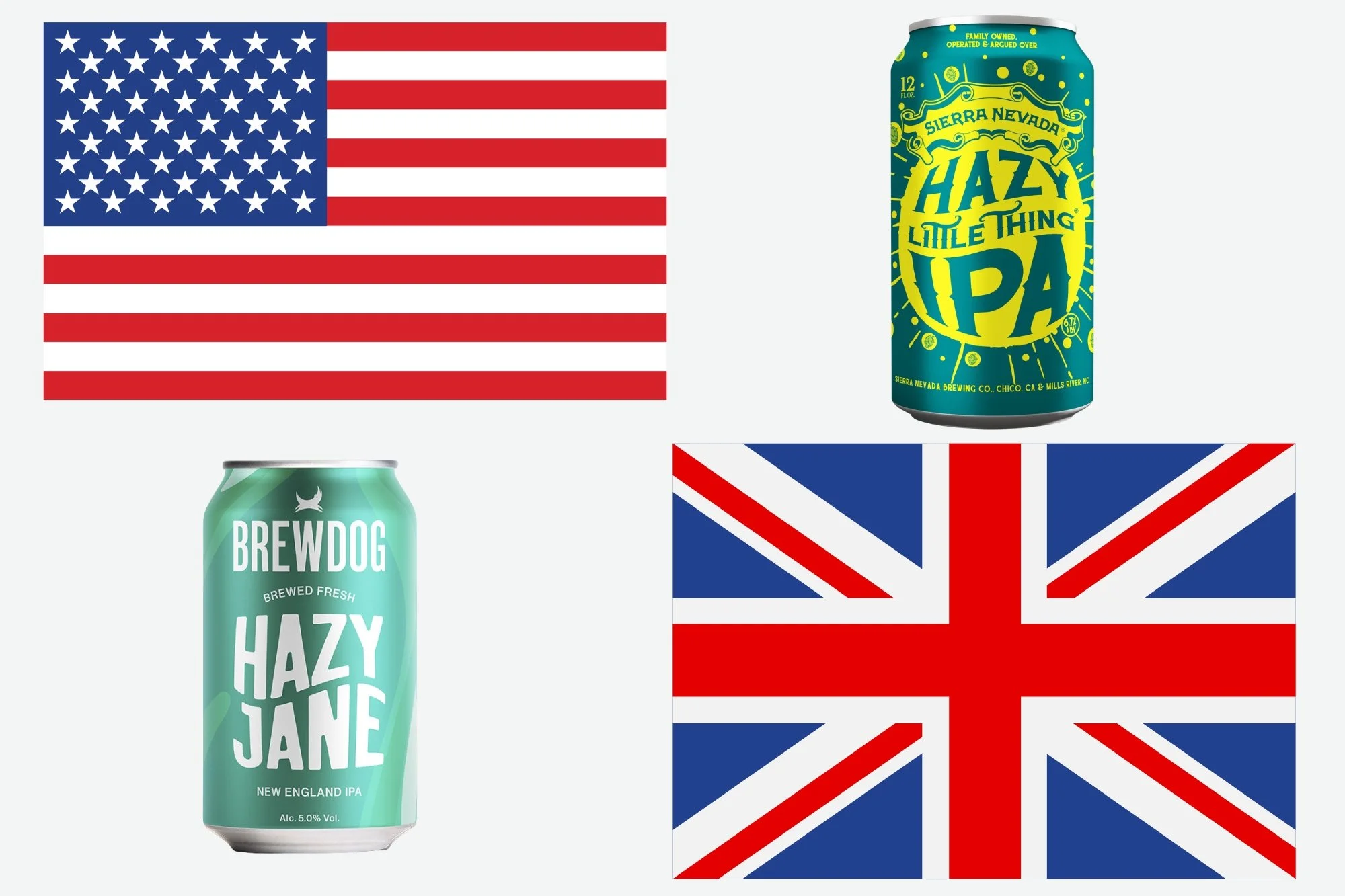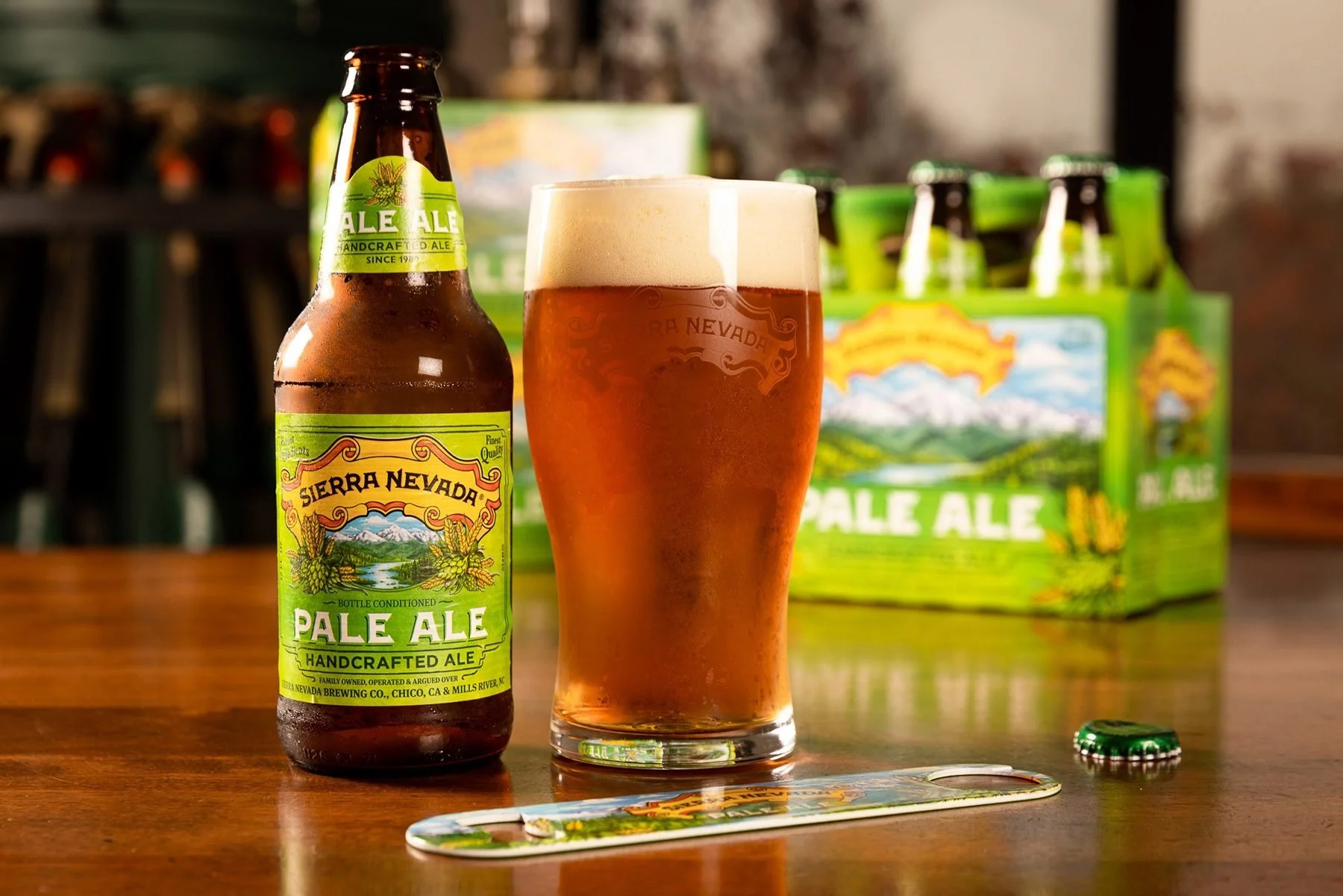How the American IPA Craze Has Impacted English IPAs
British and American IPAs
Obsession and cult-following are a few words that get tossed around when describing the United States’ infatuation with IPAs. But American brewers didn’t invent this hoppy, flavorful beer that has taken over taps around the world; our friends across the pond did.
India Pale Ales (IPA) are an evolution of English ales that gained popularity in the late 1800s. Not until 100 years later did this style of beer become a mainstay in bars and breweries across the US. And over the past two or three decades, American IPAs have helped shape the latest evolution of IPAs in the United Kingdom.
I spoke with British experts Phil Simpson, Managing Director of Lancaster Brewery and Lancaster Spirits Co., and Melissa Cole, award-winning beer journalist and Certified Cicerone, about the impact of America’s IPA craze on Britain’s counterpart.
What's the Difference?
Phil Simpson of Lancaster Brewery & Lancaster Spirits Co.
“The English IPA is the Aston Martin of beer,” says Simpson. “Smooth, elegant, no drama, everything in balance. It pours clear, deep gold or amber, with a soft head and gentle sparkle. The American IPA is the muscle car. Loud, bright, impossible to ignore. It glows gold or orange, often cloudy, fizzing with energy and attitude before you even take a sip,” he says.
Cole echoes his sentiment about a tamer flavor profile, historically coming from UK breweries. “English IPAs tend to be more subtle; the hop characteristics should reflect those of native hop styles, which have hay, fresh grass, marigold and hedgerow fruit notes,” she explains.
The American impact and AIPAs
Melissa Cole
“The US craft brewing movement has had an enormous impact on the UK brewing scene, and globally,” says Cole. She believes it opened people's minds, pulling them away from standard lagers toward a different-tasting beer where loud, punchy flavors and cool branding reigned supreme. “It took less than a decade to make its way across the pond, and it has a lasting legacy on both the style of IPA that you more commonly see here now, which is AIPA (American India Pale Ale), but also people’s attitudes to beer being fun and vibrant as opposed to boring brown beer for old blokes,” she says.
Brewdog IPAs
New British varieties
Simpson remembers when American IPA influence exploded with brands like BrewDog, Thornbridge, The Kernel, and Magic Rock – all built on that American spark. “Even the hop growers got involved, breeding new British varieties full of citrus and fruit. The American IPA had shaken Britain awake, reminding everyone that a pint, when done right, could still surprise you,” he says.
The terroir of hops
Sierra Nevada Pale Ale
“Put simply, the American craft beer revolution opened up a wider variety of hops. American IPAs (AIPAs) differ from English IPAs (EIPAs) for a number of reasons, but the terroir of hops is the main one,” says Cole. She credits the late Jack McCauliffe and Ken Grossman at Sierra Nevada for pioneering European-style beers with freshly sourced, homegrown hops, which led other growers to take terroir more seriously.
The United Kingdom’s gloomy weather has always been the butt of a joke or two, but it also affects its beer. “Because US hops get more hours of sunlight, they produce more bittering and aroma compounds,” Cole says. “This had been suppressed by the big brewing companies of the time in the UK in our homegrown varieties, and this led to classic English styles like ESB (Extra Special Bitter) and IPA taking on a whole new dimension.”
Why the alcohol content differs
Anyone who's been to the UK will tell you, the Brits love a strong drink, but American IPAs have a higher alcohol content than English ones. Cole says it has more to do with taxation than anything else. She explains that in the United States, we have flat alcohol taxation, but in the United Kingdom, it’s tiered by alcohol strength.
Simpson says that the American IPA trend didn’t just bring more flavor to beers; it also brought higher alcohol content. “Americans like their IPAs at six or seven per cent, and that bit of extra muscle gives weight and warmth to the hops,” he says. “The first time you tried an American IPA, the beer felt alive, like it was flexing at you from the glass.”





